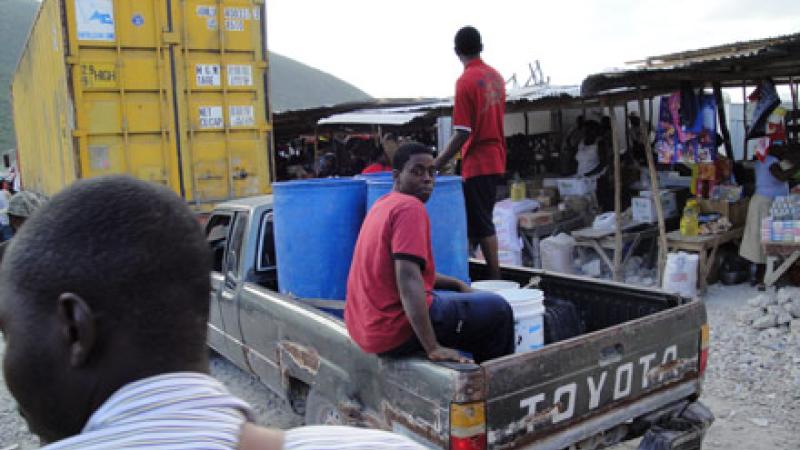World-Leading Expert To Discuss Lessons Learned From 2010 Port-au-Prince Earthquake for Post-Disaster Humanitarian Logistics
January 9, 2012

DATE:
Monday, Jan. 9, 2012
TIME:
11 a.m. to 11:20 a.m. EST — Commentary from Professor Jose Holguín-Veras
11:20 a.m. to 11:40 a.m. EST — Q&A
CALL INFO:
U.S. Toll-Free Number: 877-366-0711
International Number: 1-302-709-8446
Participant Code: 93028833#
Download slides at: http://www.rpi.edu/news/haiti
STORY:
Professor Jose Holguín-Veras’ research is not for the faint of heart. He was in New Orleans when the levee failed in the wake of Hurricane Katrina in 2005. He traveled to Haiti less than a week after the Jan. 12, 2010, earthquake. And he visited Japan last year as soon as U.S. travel restrictions to the area were lifted following the 2011 earthquake, tsunami, and nuclear crisis.
At these and dozens of other disaster sites, Holguín-Veras of Rensselaer Polytechnic Institute took careful inventory of the relief policies, procedures, preparations, and infrastructure in place. His work, funded by the National Science Foundation (NSF) and other federal agencies, aims to analyze what went right, and identify what could be improved in preparation for future disasters. Holguín-Veras is an adviser to many international governments on these matters.
A key facet of Holguín-Veras’ research looks at donations, donation patterns, and how donated money is used. Some of the stories he unearthed are bewildering: wedding dresses and winter coats sent to Florida after a summer hurricane; pork meat donated to Muslim earthquake victims in Turkey; or 10 freight containers sent to Port-au-Prince filled with donated refrigerators that required a voltage different from what is used in Haiti.
While these humanitarian donations were sent with good intentions, they generally clog up the limited supply chains into disasters areas and occupy the time of volunteers who could be contributing in other ways. And for the donations that are usable, there is often no system, network, or infrastructure in place to get that stuff to those people who need it. Sadly, in the end, many of these donations simply end up abandoned or in landfills.
This unresolved, understated issue is particularly timely as we approach the two-year anniversary of the Jan. 12, 2010, catastrophic earthquake that struck Port-au-Prince.
Holguín-Veras, a professor of civil and environmental engineering at Rensselaer Polytechnic Institute, will talk about his travels to Port-au-Prince in January 2010, as well as his more recent visits to Haiti to document the nation’s ongoing recovery effort. He will share the highlights of his research findings, which recommend that governments, disaster planning agencies, and humanitarian organizations seek out and work more closely with existing social networks local to the impacted area.
This is particularly relevant because not only poor nations are at risk, Holguín-Veras warns. While the unique characteristics of the Haitian society and economy likely exacerbated some logistical problems, he says very similar problems also surfaced in Japan after the March 2011 earthquake and tsunami.
NOTES:
In his talk, Holguín-Veras will refer to slides. To follow along, download the slides (.pdf) at: http://www.rpi.edu/news/haiti.
Additionally, you can download high-resolution photos Holguín-Veras took in Haiti. When using these images, please credit them to: “Rensselaer/ Holguín-Veras”